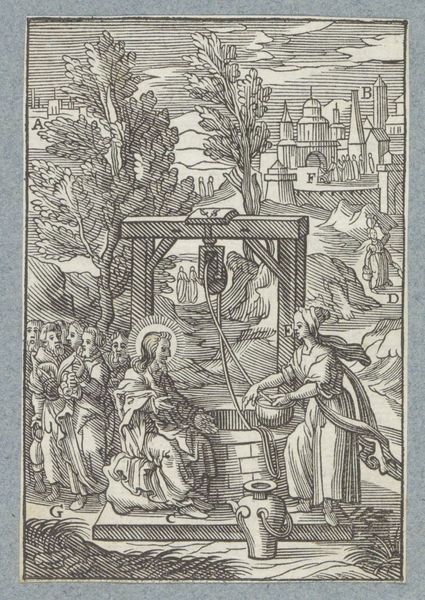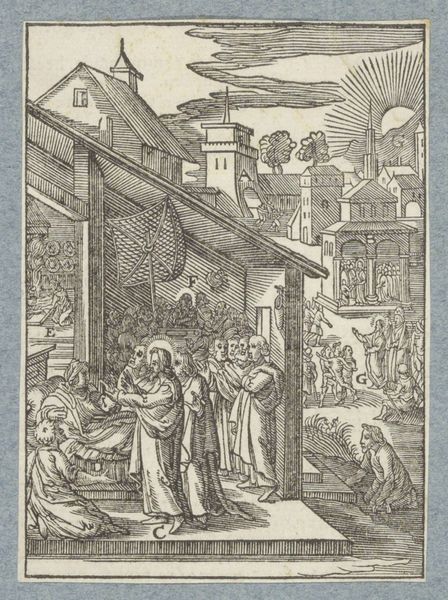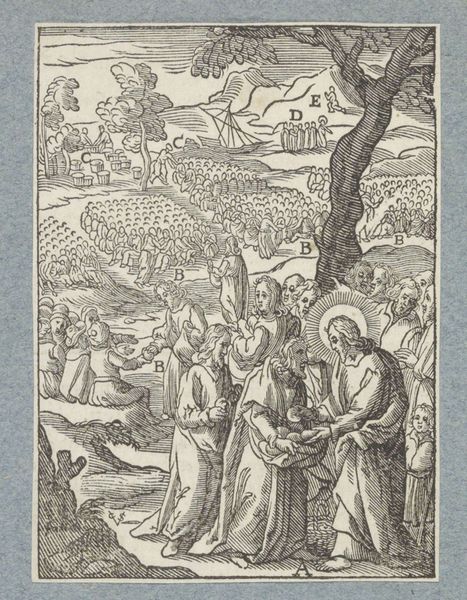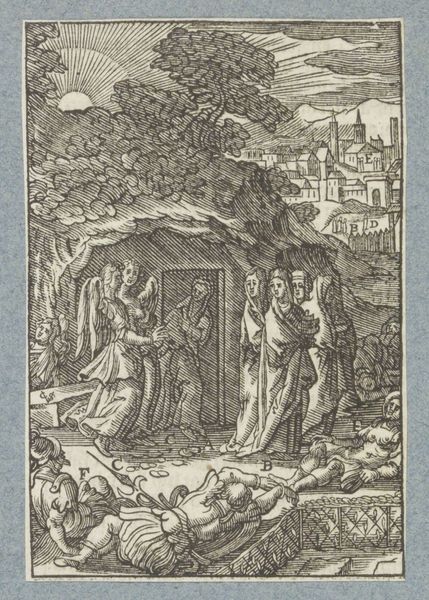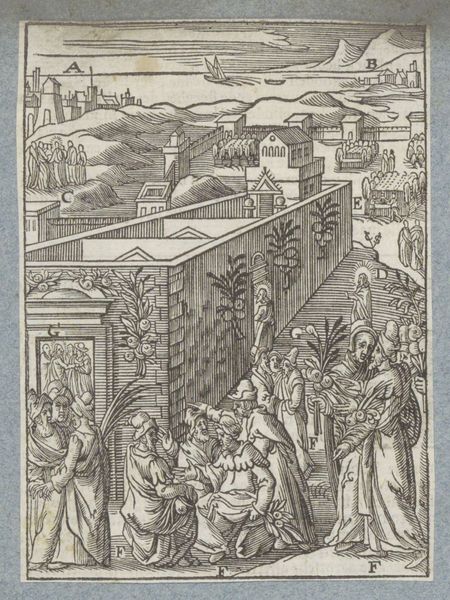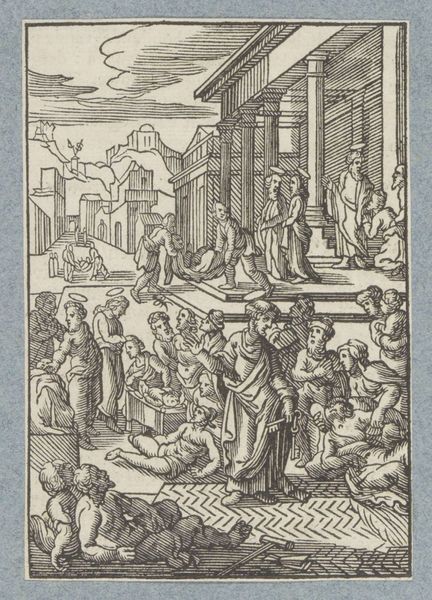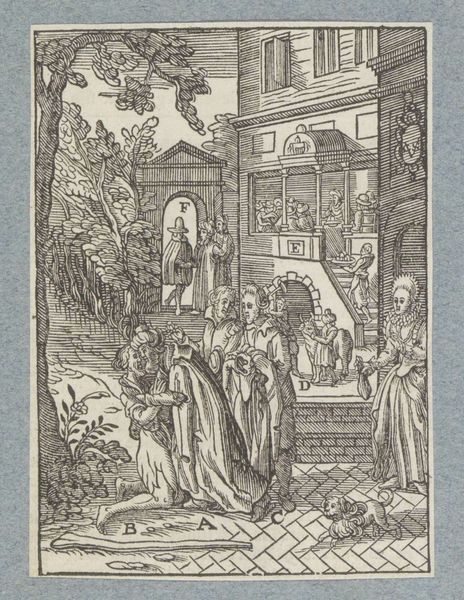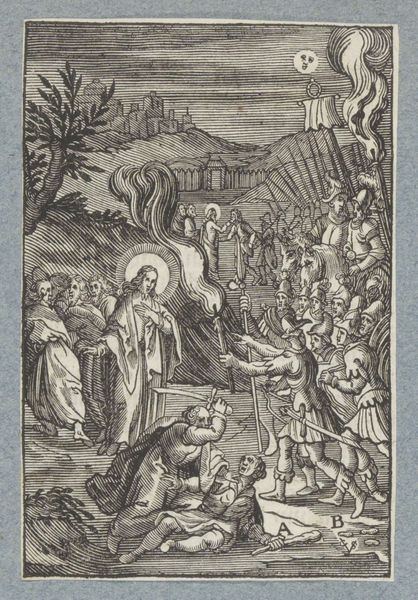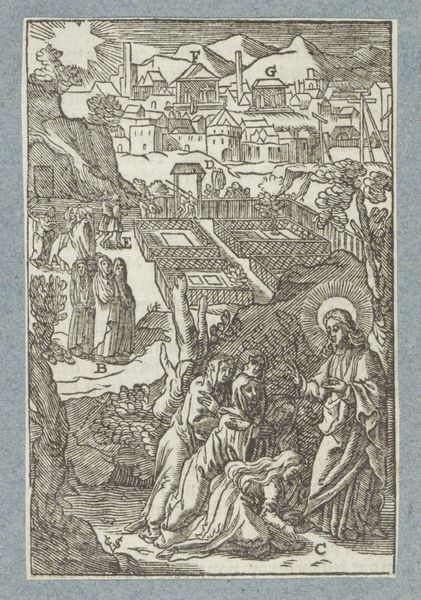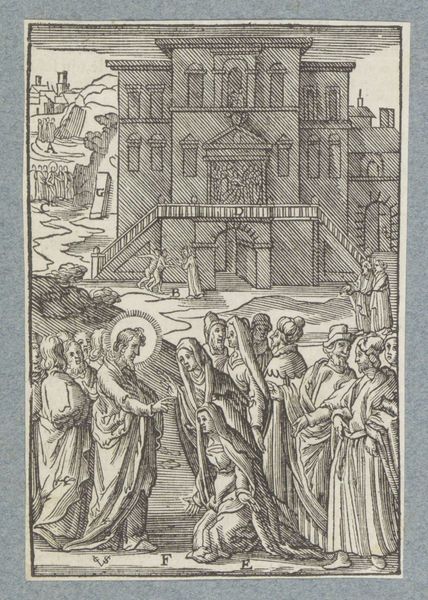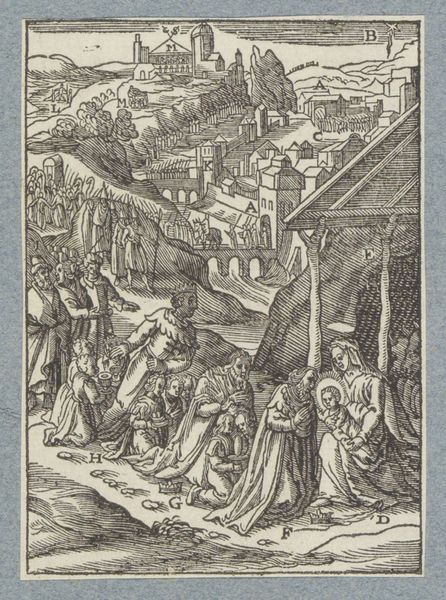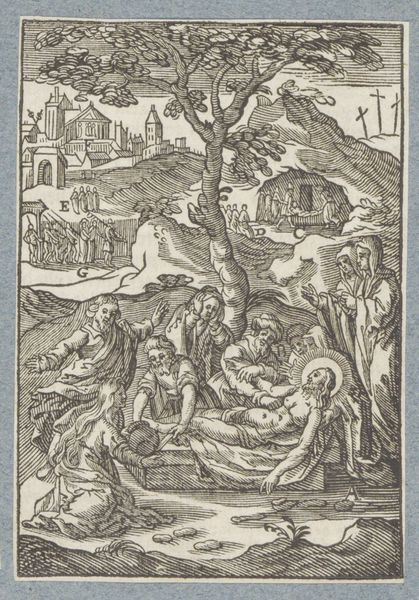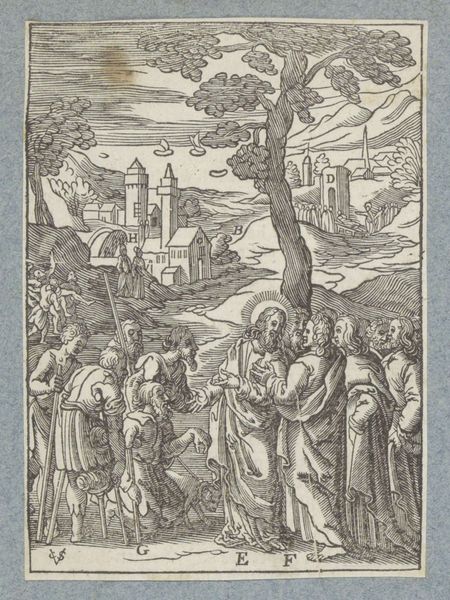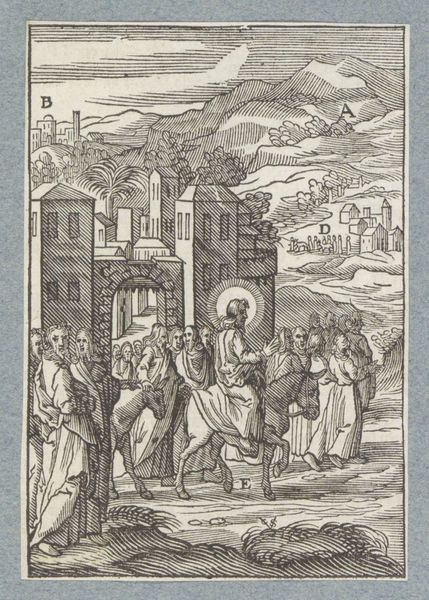
print, engraving
#
narrative-art
# print
#
figuration
#
northern-renaissance
#
engraving
Dimensions: height 113 mm, width 75 mm
Copyright: Rijks Museum: Open Domain
Editor: Here we have "Christ and his Disciples at the Well in Sychar," an engraving made in 1629 by Christoffel van Sichem II. It has this intensely linear, graphic quality. What do you notice about the piece, what details strike you? Curator: The work exemplifies the principles of Northern Renaissance engraving, in which line becomes the primary means of articulating form and space. Consider the rigorous pattern of hatching and cross-hatching used to create tonal variations and the illusion of depth. The composition also demands attention. Do you observe how the well acts as a compositional anchor? Editor: I do. Everything seems to emanate from that central point, leading the eye around the different groups of figures and into the landscape. Curator: Precisely. Van Sichem’s use of linear perspective guides the eye to appreciate the relationship between these carefully constructed areas, offering us not just an illustrative scene, but a designed space with meaning embedded in its very structure. Note too the treatment of light and shadow created through line alone. Editor: So, you're saying the power of this piece lies in its intricate lines and formal arrangement. The story itself becomes secondary to how it’s presented, materially? Curator: Exactly. By analyzing these aspects, we gain a deeper understanding of Van Sichem's artistry. We move beyond mere recognition of the narrative to appreciation of the intellectual framework that underpinned its creation. Editor: That really opens up a different way of appreciating prints like these; focusing less on subject, more on the technique and form. Thank you. Curator: My pleasure. It’s these fundamental elements that give the work its enduring power, regardless of the specific historical context.
Comments
No comments
Be the first to comment and join the conversation on the ultimate creative platform.
